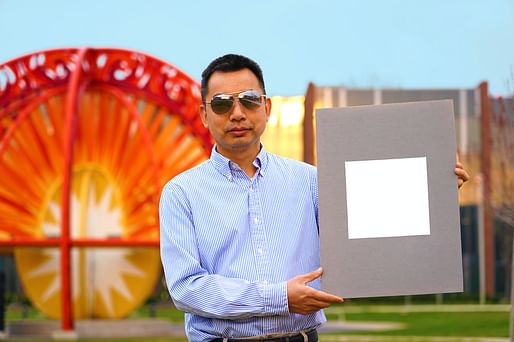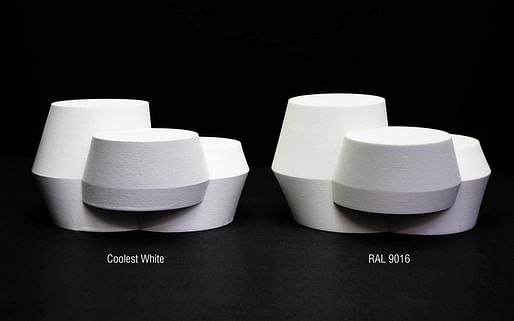
A team of researchers at Northeastern University has created a sustainable material that can cool buildings without the need for conventional AC systems. Led by associate professor Yi Zheng from the university’s College of Engineering, the team has developed a “cooling paper” made from 100% recyclable paper, intended to cover the roofs of houses, warehouses, and office buildings, as well as being incorporated into the construction of new buildings.
The “cooling paper” reduces heat gain in two ways. The paper’s light color reflects warm solar rays away from a building, similar to Purdue University’s ultra-white paint that we reported on earlier this year. Meanwhile, the porous microstructure of the natural fibers in the cooling paper absorbs warmth generated inside the building, from electronic, cooking, and human body sources, and re-emits the warmth to the exterior.

The experiment began with Zheng, a nanomaterials expert, observing buckets of waste paper and asking how such waste could be repurposed as composite materials. Using a high-speed blender, Zheng made a pulp from the paper waste before reforming it into a water-repelling “cooling paper” to coat buildings.
Through testing the paper’s cooling capacity under various temperature and humidity conditions, Zheng and his team found that the cooling paper could reduce a room’s temperature by as much as 10 degrees Fahrenheit. The team has also found that the material can be used, exposed to solar radiation and weather, then reduced to a pulp again and reformed into a new iteration without losing any of its cooling properties. “I was surprised when I obtained the same result,” Zheng says. “We thought there would be maybe 10 percent, 20 percent of loss, but no.”

Zheng sees the material as a sustainable method of both reducing energy bills and fight climate change. “The ultimate goal is to reduce global warming,” Zheng says. “The starting point is to reduce the use of carbon-based materials and also to reduce global warming.” The research has now been published in the American Chemical Society’s journal Applied Materials & Interfaces.
The cooling paper is the latest in a series of research breakthroughs by material science teams in recent months. In June, Worcester Polytechnic Institute developed a new method for producing concrete with self-healing capabilities to strengthen the durability of concrete structures. In May, researchers at the University of Kassel in Germany published their findings on the potential for smart glazing to transform building energy use. Meanwhile, Snøhetta has recently announced details of their partnership with Norwegian startup Saferock to develop net-zero concrete for the future of construction.
No Comments
Block this user
Are you sure you want to block this user and hide all related comments throughout the site?
Archinect
This is your first comment on Archinect. Your comment will be visible once approved.